This was the first night in Tokyo for this trip.
The flight landed in the early morning around 7:00am.
I waited for an hour in the border control and then took a morning train, that I shared with local commuters, to Ginza (銀座).
Anyway, I was not as tired as I thought by the evening when I prepared to go to the restaurant.
The restaurant is on a quiet road but walkable from central Ginza.
I was confused on finding the place because there was a small van parking at the front door.
Inside, it is a very small restaurant, having 6-8 counter seats where chef preparing and cooking some food in front of you; of course there is a back kitchen; additionally, there are probably around ten table seats, in a separate room.
The chef, who gave me a name card, served Kaiseki (懐石) and no menu, hence of omakase (style).
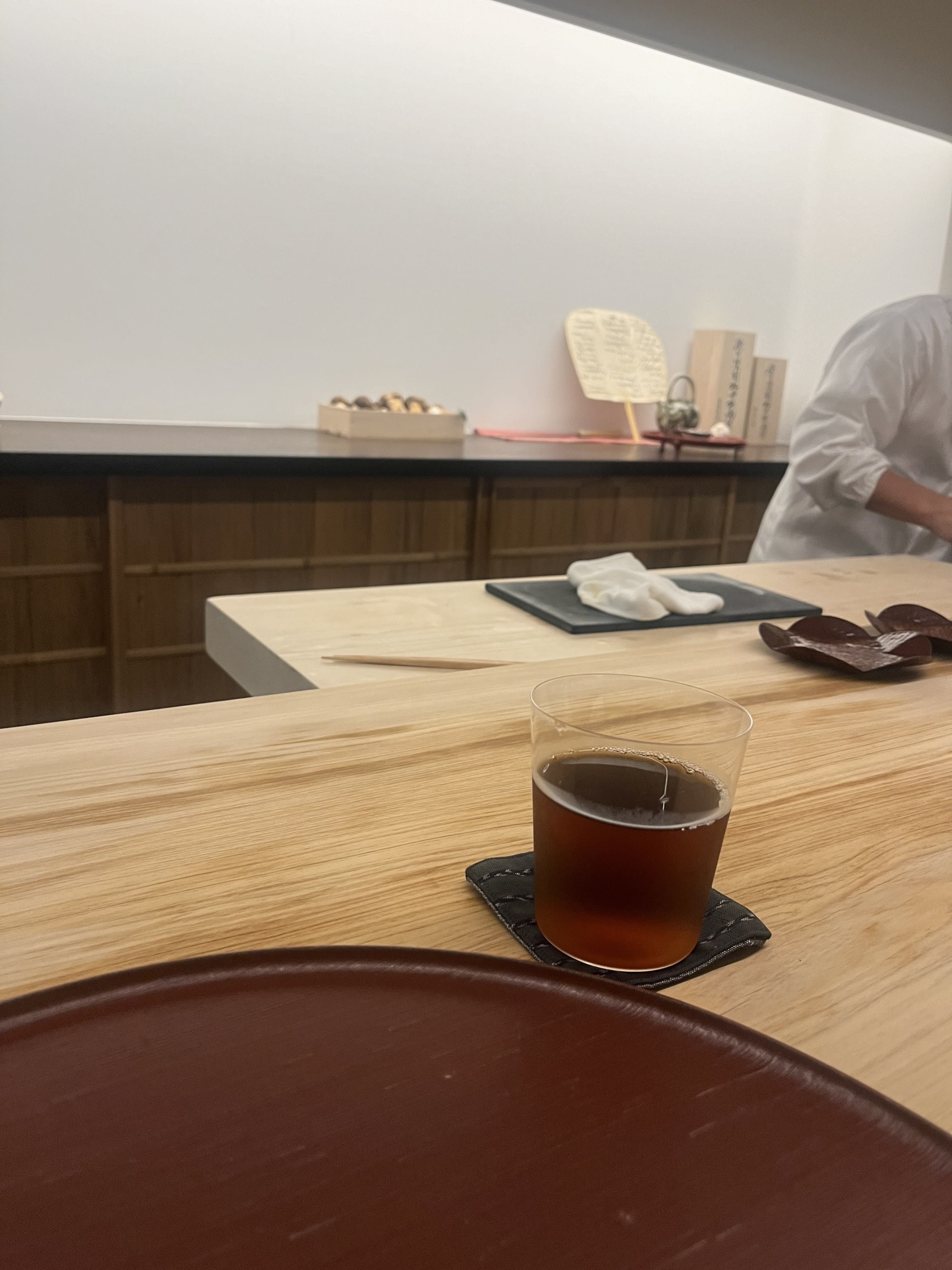
The first dish was very interestingly cold (raw) urchins with melon paste base; the former had creamy taste while the latter added some fabric texture and sweat and fresh flavour.
The fruity flavour also neutralise the strong oceanic flavour from the urchins.
This is important as the strong oceanic-fresh flavour might put off a non-Japanese audience.
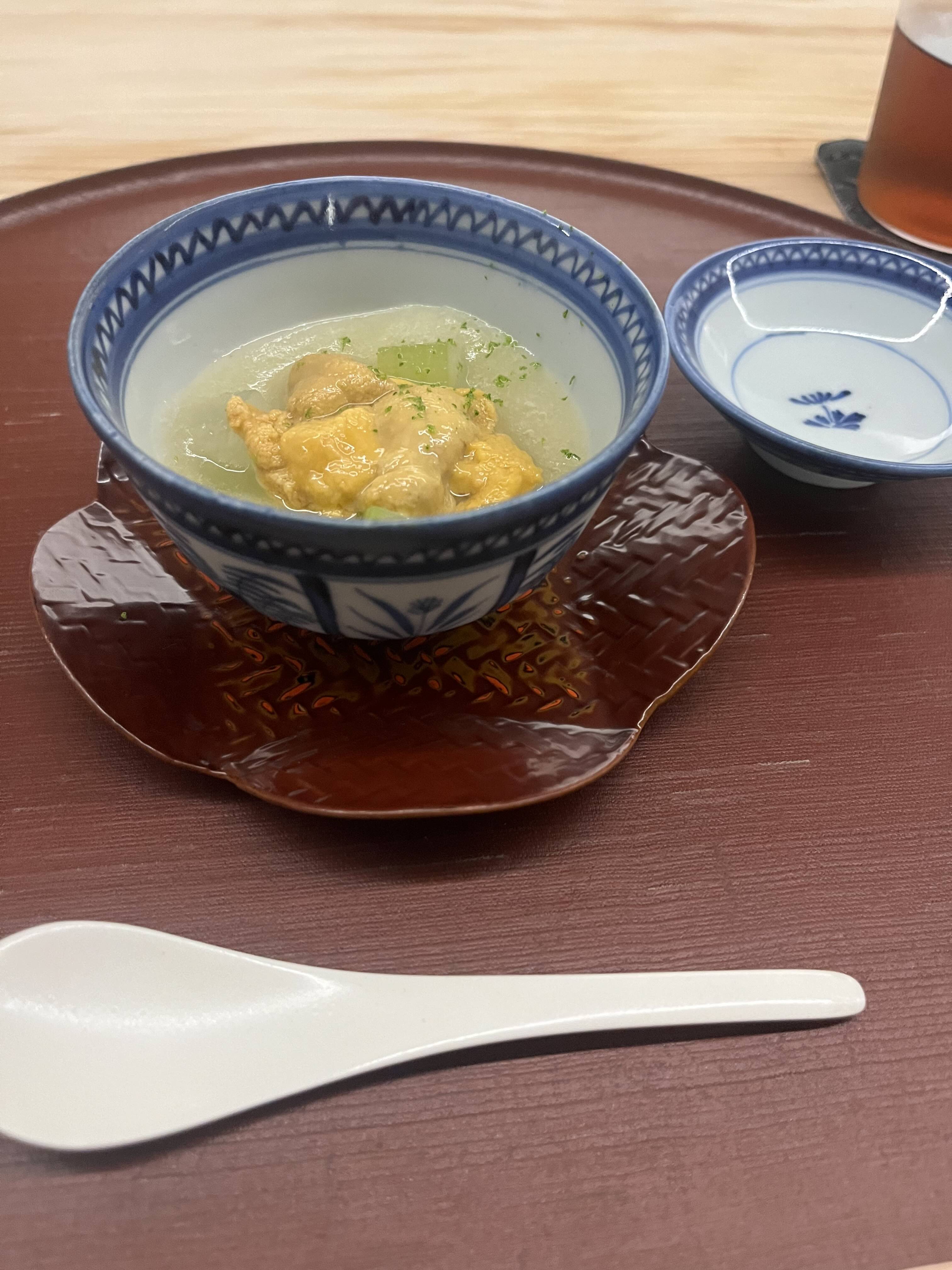 The second dish I loved is a simple fried or grilled fish, which I believe it is saury (秋刀魚).
I have been told eat everything from head to tail.
It was such a fun experience because the head part was very bitter but a little sweat, while the tail with more meat was more juicy and umami-flavoured.
The second dish I loved is a simple fried or grilled fish, which I believe it is saury (秋刀魚).
I have been told eat everything from head to tail.
It was such a fun experience because the head part was very bitter but a little sweat, while the tail with more meat was more juicy and umami-flavoured.
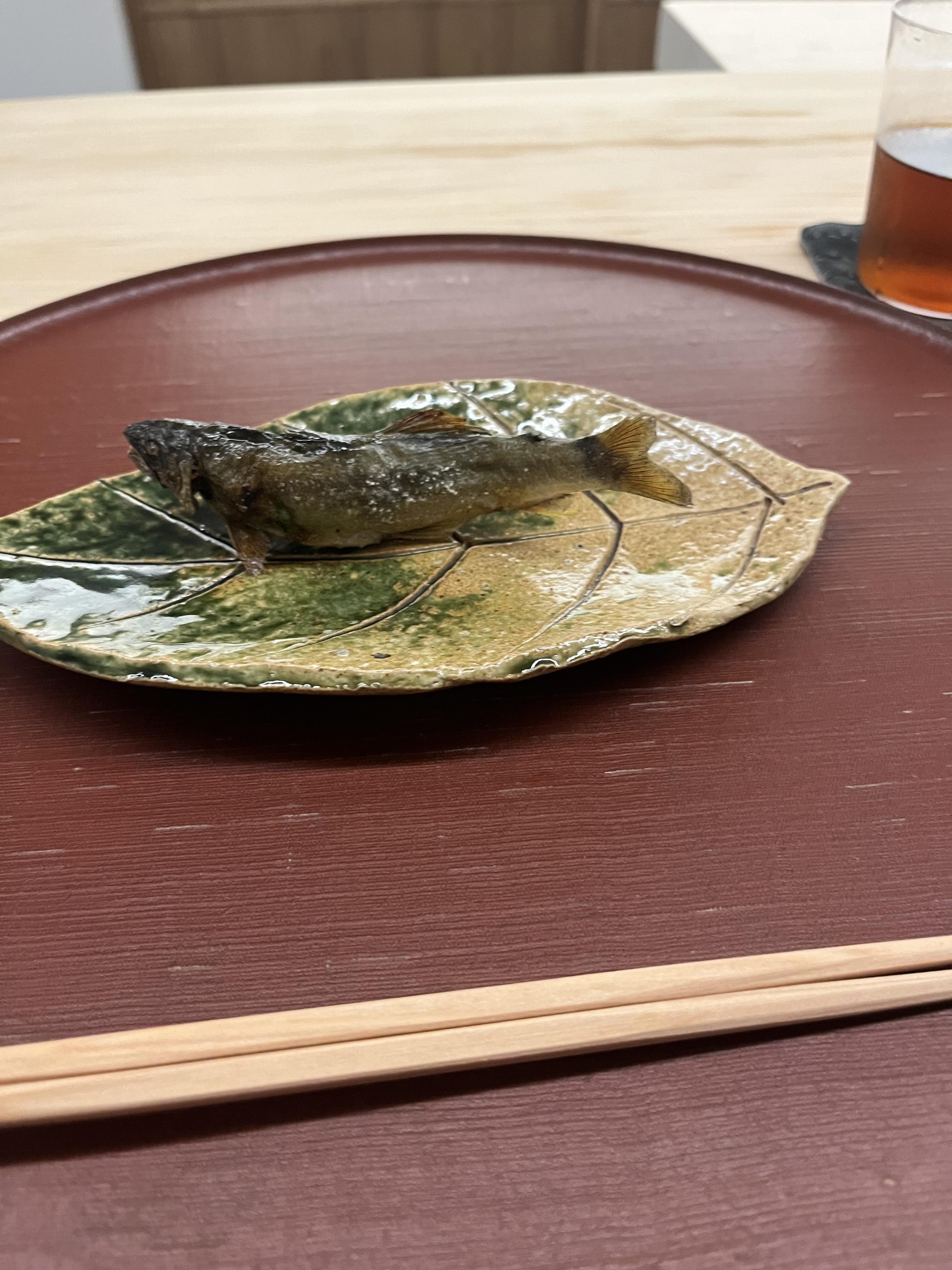 Then we got a caviar inside a lime, and the base was sticky rice and a bit of squid (if I remember).
Comparing to restaurants in Europe that uses caviar as a more side ingredients to balance greasy or cream flavour, here, it was a very cute idea: the caviar was salty but the rest ingredients were not including the lime juice, yet everything just blend in together perfectly and nothing too popped up.
Then we got a caviar inside a lime, and the base was sticky rice and a bit of squid (if I remember).
Comparing to restaurants in Europe that uses caviar as a more side ingredients to balance greasy or cream flavour, here, it was a very cute idea: the caviar was salty but the rest ingredients were not including the lime juice, yet everything just blend in together perfectly and nothing too popped up.
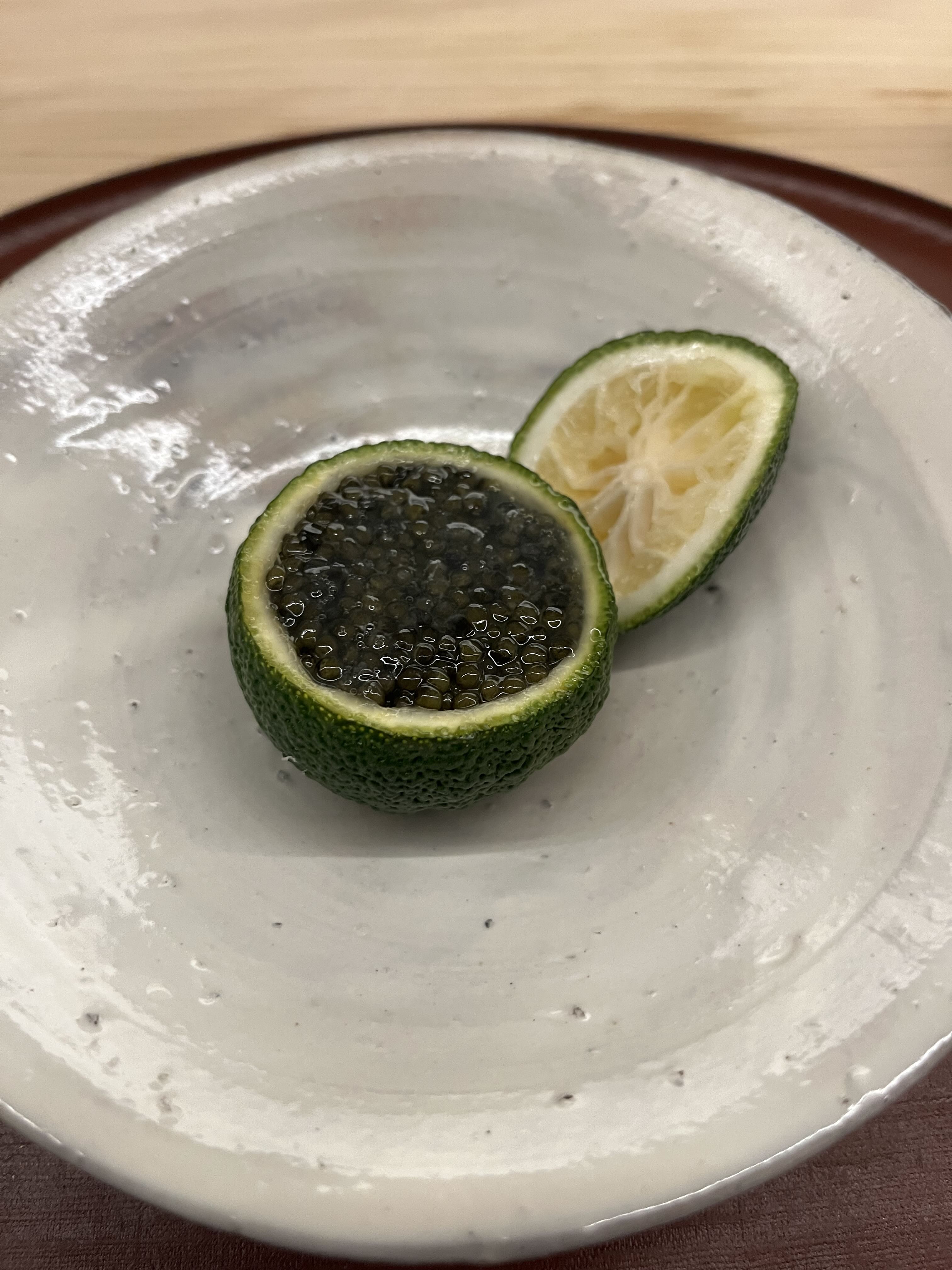 Then let move to some hot dishes I enjoyed.
We started from a guji (tile fish) and mushroom soup.
Prior this moment, I saw the chef made the “diamond cut”, without cutting the skin, to the fish, and then also cut the mushroom in front of the counter.
The soup base was either chicken or beef stock, however, extremely clean and liquid, look like just water.
Making such stock requires much time and skill.
The fish, because of the skin, and matsutake mushroom had very chewy and crisp texture.
Of course, the soup contained a lot of umami flavour but it was not overwhelmed at all.
I still tasted some freshness and sweetness when then soup go down the throat.
Then let move to some hot dishes I enjoyed.
We started from a guji (tile fish) and mushroom soup.
Prior this moment, I saw the chef made the “diamond cut”, without cutting the skin, to the fish, and then also cut the mushroom in front of the counter.
The soup base was either chicken or beef stock, however, extremely clean and liquid, look like just water.
Making such stock requires much time and skill.
The fish, because of the skin, and matsutake mushroom had very chewy and crisp texture.
Of course, the soup contained a lot of umami flavour but it was not overwhelmed at all.
I still tasted some freshness and sweetness when then soup go down the throat.
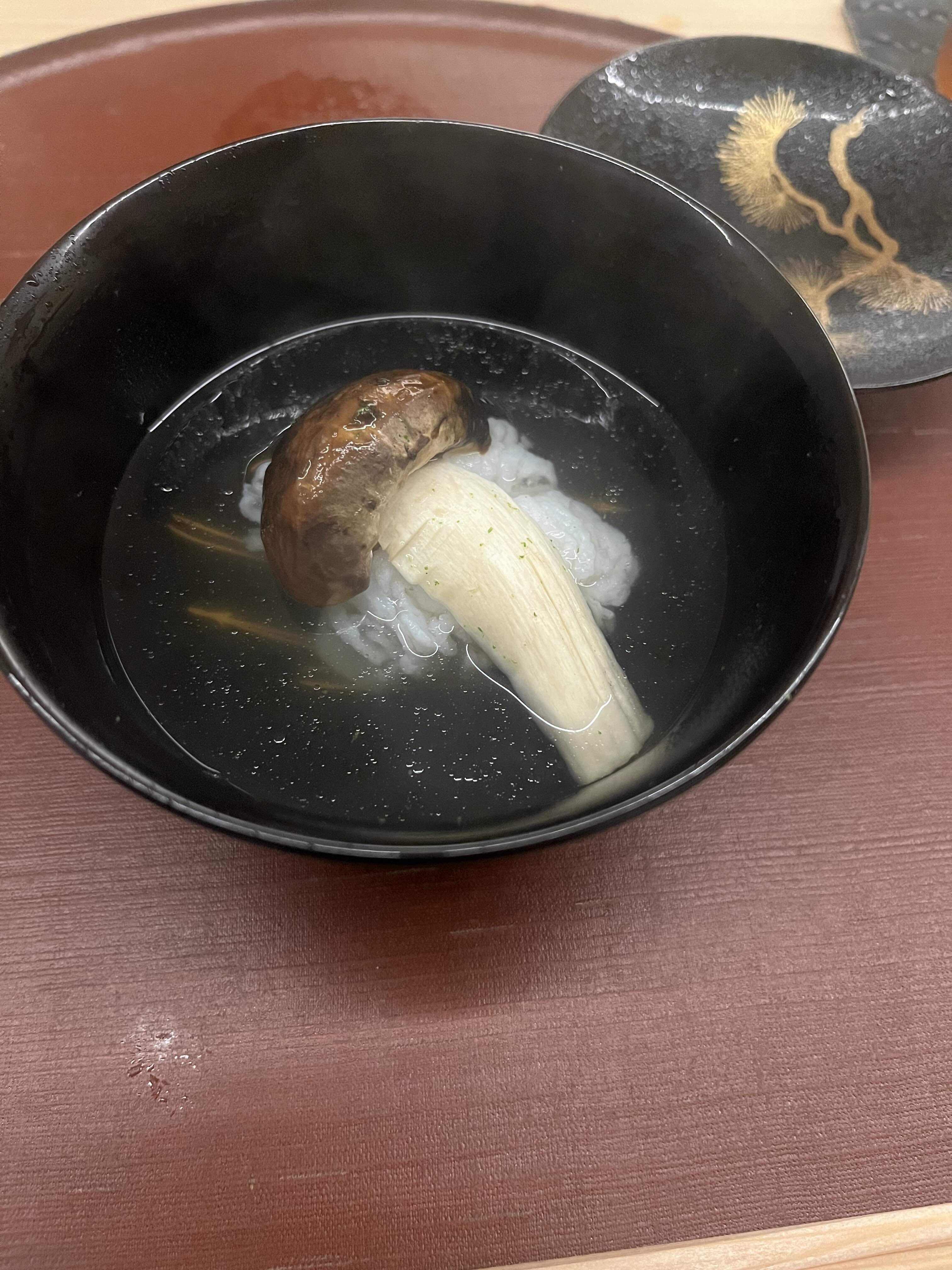 The main was wagyu beef soup (picture not given); nothing was very surprised here.
However the last rice bento, which is very common in Japan, really put me off.
The problem is the side, especially, the cold Japanese aubergine, which was certainly not my taste at all with strong fishy flavour and frozenly cold.
Also the noodle in a very strangely sticky sesame soup killed me, which I did not even finish.
The main was wagyu beef soup (picture not given); nothing was very surprised here.
However the last rice bento, which is very common in Japan, really put me off.
The problem is the side, especially, the cold Japanese aubergine, which was certainly not my taste at all with strong fishy flavour and frozenly cold.
Also the noodle in a very strangely sticky sesame soup killed me, which I did not even finish.

It was a very home and warm environment where the chefs were all very relax and simply enjoyed the evening together with the audience. The food looked, in general, simple however with subtle thought and seasoning, though there was some dish I disliked and I have eaten several mushroom-based dishes (and I skipped them in this blog-post)—some might complain where are the posh ingredients for the price.
